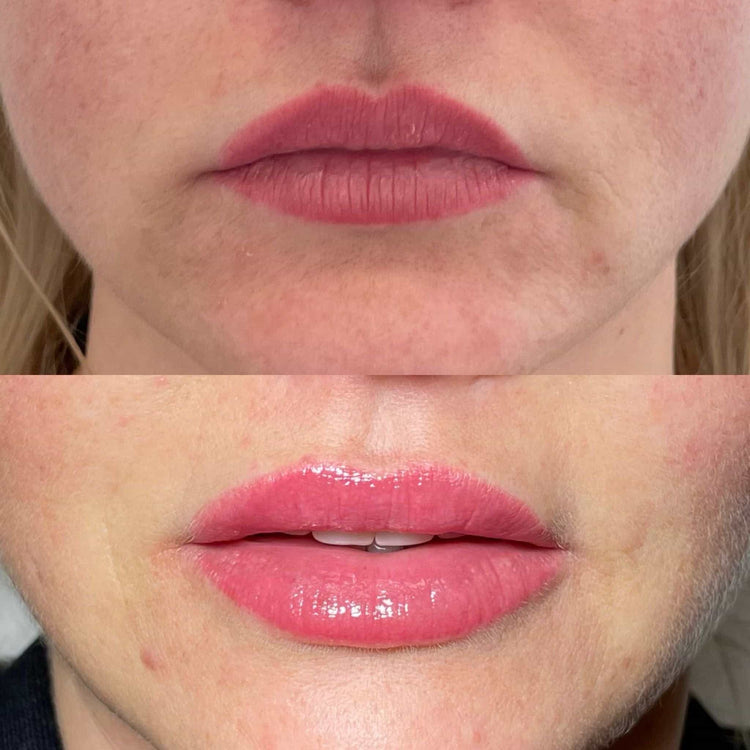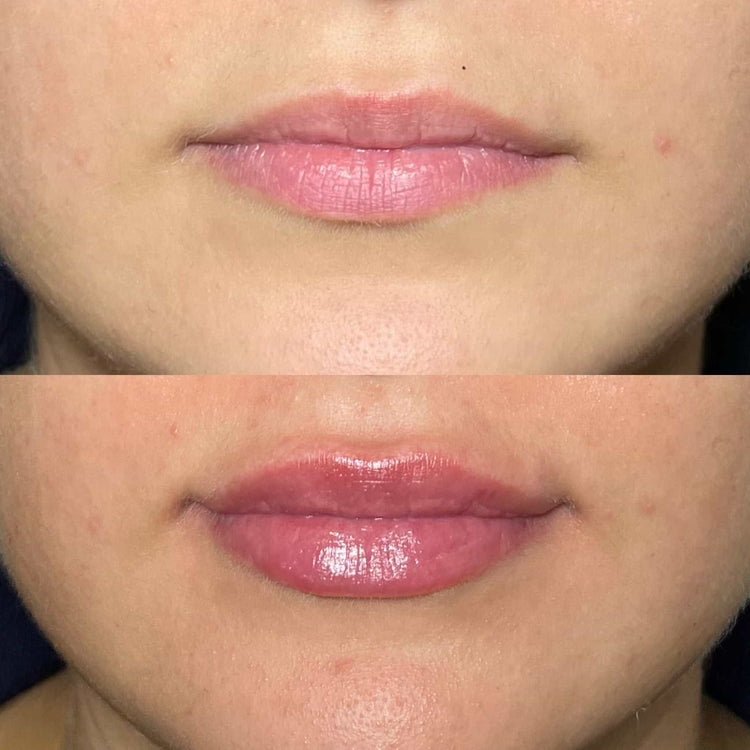How To Enhance Your Smile With Lip Fillers
Understanding Lip Filler Options
Achieving fuller, more defined lips can significantly boost your confidence and enhance your overall appearance. Lip fillers offer a non-surgical solution for those seeking subtle or dramatic lip augmentation.
Hyaluronic Acid Fillers
Hyaluronic acid is the most popular ingredient used in lip fillers. It’s a naturally occurring substance found in the body, responsible for maintaining skin hydration and elasticity. When injected into the lips, hyaluronic acid attracts and binds water, plumping up the lips and creating a smoother, more voluminous appearance.
Hyaluronic acid fillers come in various viscosities, allowing practitioners to tailor treatment to individual needs. For example, thicker gels provide more volume and lift, while thinner gels are ideal for defining lip borders or correcting asymmetry.
Collagen Stimulating Fillers
Collagen stimulating fillers offer a unique approach to lip enhancement by triggering the body’s natural collagen production.

These fillers often contain synthetic or biocompatible materials that stimulate fibroblasts, the cells responsible for producing collagen. As collagen levels increase, the lips naturally volumize and appear fuller over time.
The results of collagen stimulating fillers are typically long-lasting, as they promote the body’s own collagen synthesis rather than simply adding temporary volume like hyaluronic acid fillers do.
The Consultation Process
Embarking on the journey of lip augmentation requires careful consideration and a thorough consultation process. During this initial meeting, a qualified practitioner will listen attentively to your aesthetic goals, discuss your medical history, and assess your individual anatomy. This in-depth evaluation ensures that the chosen treatment plan aligns with your desires while prioritizing safety and achieving natural-looking results.
Assessing Your Goals
Assessing your goals is a crucial step in the consultation process for lip augmentation. This allows both you and the practitioner to ensure you are on the same page regarding desired outcomes and expectations.
- Consider what you hope to achieve with lip fillers. Are you looking for subtle enhancement, fuller lips, or correction of asymmetry?
- Bring inspiration photos to your consultation to help communicate your vision.
- Discuss your lifestyle and any concerns you have about potential side effects or downtime.
Open and honest communication with your practitioner is essential for achieving the best possible results.
Evaluating Facial Anatomy
Evaluating facial anatomy is a fundamental aspect of the consultation process for lip augmentation. A skilled practitioner will carefully examine your face, considering the shape of your lips, your nose, your chin, and the overall balance of your features.
They will assess factors such as your Cupid’s bow (the dip in the center of the upper lip), the fullness of your upper and lower lips, and any existing asymmetry. Understanding these anatomical details allows the practitioner to create a customized treatment plan that harmonizes with your unique facial structure and enhances your natural beauty.
The Procedure
Embarking on a journey to enhance your smile with lip fillers begins with careful consideration and thorough consultation. During this initial meeting, a qualified practitioner will meticulously assess your goals, medical history, and individual anatomy to develop a personalized treatment plan that aligns with your desires while prioritizing safety and natural-looking results.
Preparation
Achieving fuller, more defined lips can significantly boost your confidence and enhance your overall appearance. Lip fillers offer a non-surgical solution for those seeking subtle or dramatic lip augmentation.
Hyaluronic acid is the most popular ingredient used in lip fillers. It’s a naturally occurring substance found in the body, responsible for maintaining skin hydration and elasticity. When injected into the lips, hyaluronic acid attracts and binds water, plumping up the lips and creating a smoother, more voluminous appearance.
Hyaluronic acid fillers come in various viscosities, allowing practitioners to tailor treatment to individual needs. For example, thicker gels provide more volume and lift, while thinner gels are ideal for defining lip borders or correcting asymmetry.
Collagen stimulating fillers offer a unique approach to lip enhancement by triggering the body’s natural collagen production. These fillers often contain synthetic or biocompatible materials that stimulate fibroblasts, the cells responsible for producing collagen. As collagen levels increase, the lips naturally volumize and appear fuller over time.
The results of collagen stimulating fillers are typically long-lasting, as they promote the body’s own collagen synthesis rather than simply adding temporary volume like hyaluronic acid fillers do.
Assessing your goals is a crucial step in the consultation process for lip augmentation. This allows both you and the practitioner to ensure you are on the same page regarding desired outcomes and expectations.
- Consider what you hope to achieve with lip fillers. Are you looking for subtle enhancement, fuller lips, or correction of asymmetry?
- Bring inspiration photos to your consultation to help communicate your vision.
- Discuss your lifestyle and any concerns you have about potential side effects or downtime.
Evaluating facial anatomy is a fundamental aspect of the consultation process for lip augmentation. A skilled practitioner will carefully examine your face, considering the shape of your lips, your nose, your chin, and the overall balance of your features.
They will assess factors such as your Cupid’s bow (the dip in the center of the upper lip), the fullness of your upper and lower lips, and any existing asymmetry. Understanding these anatomical details allows the practitioner to create a customized treatment plan that harmonizes with your unique facial structure and enhances your natural beauty.
Injection Technique
Injection techniques for lip fillers vary depending on the desired outcome and the type of filler used. A skilled injector will use fine needles or cannulas to precisely deliver the filler material into specific areas of the lips.
- Vertical Ridges: Involves injecting small amounts of filler along vertical lines, creating a plumper and smoother appearance.
- Border Enhancement: Filler is injected along the outer edges of the upper and lower lips to define their borders and create a more prominent outline.
- Cupid’s Bow Definition: Filler is strategically placed at the Cupid’s bow, enhancing its natural shape and adding fullness to the center of the upper lip.
- Lip Lift: Injections are made in the area above the upper lip, creating a subtle lift that shortens the distance between the nose and upper lip.
Aftercare Instructions
Aftercare Instructions for Lip Fillers
The following steps will help ensure your lip fillers heal properly and achieve optimal results:
* **Initial Cooling:** Apply ice packs or cold compresses to your lips for 10-15 minutes at a time, several times a day, during the first 24 hours after treatment to minimize swelling.
* **Avoid Touching:** Resist the urge to touch, rub, or pick at your lips as this can increase the risk of infection and uneven healing.
* **Gentle Cleansing:** Gently cleanse your lips with a mild soap and water twice a day. Avoid harsh scrubs or exfoliants during the healing process.
* **Hydration:** Keep your lips hydrated by using a fragrance-free lip balm regularly.
* **Avoid Sun Exposure:** Protect your lips from direct sunlight by wearing sunscreen (SPF 30 or higher) and avoiding prolonged sun exposure for at least two weeks following treatment.
* **No Smoking/Alcohol:** Refrain from smoking and excessive alcohol consumption as they can impede healing and increase the risk of complications.
* **Limit Facial Activities:** Avoid strenuous facial exercises, massages, or any activities that may put pressure on your lips for a few days after treatment.
* **Monitor for Side Effects:** Watch out for any signs of infection, such as redness, swelling, pus, or fever. Contact your practitioner immediately if you experience any concerning symptoms.
Follow-up appointments are typically scheduled a week or two after the initial treatment to assess healing progress and make any necessary adjustments.
Potential Risks and Side Effects
While lip fillers offer many benefits, it’s important to be aware of potential risks and side effects. Common side effects include swelling, bruising, redness, and tenderness around the injection sites. These usually subside within a few days to a week. In rare cases, more serious complications like infection, allergic reactions, or uneven results can occur. It’s crucial to choose a qualified and experienced practitioner who uses safe techniques and high-quality products to minimize these risks.
Bruising and Swelling
Bruising and swelling are common side effects of lip fillers and typically resolve within a few days to a week.
These reactions occur as the body responds to the injection process. To minimize discomfort and promote healing, it’s essential to follow your practitioner’s post-treatment instructions carefully.
Allergic Reactions
Potential side effects of lip fillers can range from mild to more serious. Common side effects include swelling, redness, bruising, tenderness, and itching around the injection sites. These usually subside within a few days to a week.
Allergic reactions are possible but relatively rare. They may manifest as hives, rash, itching, or difficulty breathing. In case of an allergic reaction, seek immediate medical attention.
Less common risks include infection, which can be treated with antibiotics. Uneven distribution of the filler material or asymmetry is also possible, and a follow-up appointment might be needed to address this.
It’s crucial to choose a qualified and experienced practitioner who uses sterile techniques and high-quality products to minimize these risks.
Infection Risk
While lip fillers offer many benefits, it’s important to be aware of potential risks and side effects. Common side effects include swelling, bruising, redness, and tenderness around the injection sites. These usually subside within a few days to a week. In rare cases, more serious complications like infection, allergic reactions, or uneven results can occur.
Infection is always a risk with any medical procedure involving injections. It’s crucial to follow your practitioner’s post-treatment instructions carefully to minimize this risk.
Allergic reactions are possible, although relatively rare. Symptoms may include hives, rash, itching, or difficulty breathing. Seek immediate medical attention if you experience an allergic reaction.
Other potential risks include uneven distribution of the filler material or asymmetry, which can be addressed with a follow-up appointment.
Achieving Desired Results
Achieving fuller, more defined lips can significantly boost your confidence and enhance your overall appearance. Lip fillers offer a non-surgical solution for those seeking subtle or dramatic lip augmentation.
Gradual Enhancement
Embarking on a journey to enhance your smile with lip fillers begins with careful consideration and thorough consultation. During this initial meeting, a qualified practitioner will meticulously assess your goals, medical history, and individual anatomy to develop a personalized treatment plan that aligns with your desires while prioritizing safety and natural-looking results.
Assessing your goals is a crucial step in the consultation process for lip augmentation. This allows both you and the practitioner to ensure you are on the same page regarding desired outcomes and expectations.
- Consider what you hope to achieve with lip fillers. Are you looking for subtle enhancement, fuller lips, or correction of asymmetry?
- Bring inspiration photos to your consultation to help communicate your vision.
- Discuss your lifestyle and any concerns you have about potential side effects or downtime.
Evaluating facial anatomy is a fundamental aspect of the consultation process for lip augmentation. A skilled practitioner will carefully examine your face, considering the shape of your lips, your nose, your chin, and the overall balance of your features.
They will assess factors such as your Cupid’s bow (the dip in the center of the upper lip), the fullness of your upper and lower lips, and any existing asymmetry. Understanding these anatomical details allows the practitioner to create a customized treatment plan that harmonizes with your unique facial structure and enhances your natural beauty.
Injection techniques for lip fillers vary depending on the desired outcome and the type of filler used. A skilled injector will use fine needles or cannulas to precisely deliver the filler material into specific areas of the lips.
- Vertical Ridges: Involves injecting small amounts of filler along vertical lines, creating a plumper and smoother appearance.
- Border Enhancement: Filler is injected along the outer edges of the upper and lower lips to define their borders and create a more prominent outline.
- Cupid’s Bow Definition: Filler is strategically placed at the Cupid’s bow, enhancing its natural shape and adding fullness to the center of the upper lip.
- Lip Lift: Injections are made in the area above the upper lip, creating a subtle lift that shortens the distance between the nose and upper lip.
Aftercare Instructions for Lip Fillers
The following steps will help ensure your lip fillers heal properly and achieve optimal results:
* **Initial Cooling:** Apply ice packs or cold compresses to your lips for 10-15 minutes at a time, several times a day, during the first 24 hours after treatment to minimize swelling.

* **Avoid Touching:** Resist the urge to touch, rub, or pick at your lips as this can increase the risk of infection and uneven healing.
* **Gentle Cleansing:** Gently cleanse your lips with a mild soap and water twice a day. Avoid harsh scrubs or exfoliants during the healing process.
* **Hydration:** Keep your lips hydrated by using a fragrance-free lip balm regularly.
* **Avoid Sun Exposure:** Protect your lips from direct sunlight by wearing sunscreen (SPF 30 or higher) and avoiding prolonged sun exposure for at least two weeks following treatment.
* **No Smoking/Alcohol:** Refrain from smoking and excessive alcohol consumption as they can impede healing and increase the risk of complications.
* **Limit Facial Activities:** Avoid strenuous facial exercises, massages, or any activities that may put pressure on your lips for a few days after treatment.
* **Monitor for Side Effects:** Watch out for any signs of infection, such as redness, swelling, pus, or fever. Contact your practitioner immediately if you experience any concerning symptoms.
Follow-up appointments are typically scheduled a week or two after the initial treatment to assess healing progress and make any necessary adjustments.
Multiple Treatment Sessions
Multiple treatment sessions can enhance results and ensure long-lasting outcomes for lip fillers.
Hyaluronic acid fillers, while effective, tend to be temporary. As your body gradually metabolizes the hyaluronic acid, the volume in your lips will naturally decrease over time, typically lasting anywhere from 6 to 18 months. Regular touch-up sessions can help maintain your desired fullness and shape throughout this period.
Collagen stimulating fillers, due to their ability to encourage natural collagen production, often provide more durable results. However, multiple sessions may still be recommended to achieve optimal volume and ensure that your lips retain their plumpness for a longer duration.
The frequency of touch-up appointments will vary depending on individual factors such as the type of filler used, the amount injected, your body’s metabolism, and lifestyle habits like sun exposure and smoking. Your practitioner can provide personalized recommendations based on your specific needs and goals.
Long-Term Maintenance
Long-term maintenance for lip fillers involves regular touch-up appointments to maintain desired volume and shape. Hyaluronic acid fillers typically last 6 to 18 months, while collagen stimulating fillers may offer longer-lasting results. The frequency of touch-ups will depend on individual factors and should be discussed with your practitioner.
Filler Degradation Rate
Long-term maintenance for lip fillers involves regular touch-up appointments to maintain desired volume and shape. Hyaluronic acid fillers, which are the most common type, typically last between 6 to 18 months before requiring a refresh.
The filler degrades naturally over time as your body breaks it down. Collagen stimulating fillers tend to offer longer-lasting results, sometimes up to two years or more, because they stimulate your own collagen production. However, touch-up sessions may still be needed to ensure optimal fullness and shape longevity.
The exact timing of touch-up appointments will vary based on individual factors like metabolism, lifestyle habits (sun exposure, smoking), and the specific filler used. Your practitioner can determine the ideal maintenance schedule for your unique needs during your consultations.
Repeat Treatments
Long-term maintenance for lip fillers involves regular touch-up appointments to maintain desired volume and shape.
Hyaluronic acid fillers, which are commonly used, typically last between 6 to 18 months before needing a refresh as the body naturally breaks them down.
Collagen stimulating fillers can offer longer-lasting results, sometimes up to two years or more, because they encourage your body’s own collagen production.
However, touch-up sessions might still be recommended to ensure optimal fullness and shape longevity. The frequency of these touch-ups will depend on individual factors such as metabolism, lifestyle habits (sun exposure, smoking), and the specific filler used. Your practitioner can determine the ideal maintenance schedule for you during your consultations.
Book your lip filler treatment with Dr. Laura Geige at It’s Me & You Clinic for flawless lips
- How Long Does Tear Trough Filler Take To Settle - May 12, 2025
- Is Nasal Flaring Normal In Adults? - May 12, 2025
- How To Enhance Your Smile With Lip Fillers - May 11, 2025
